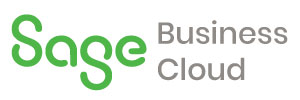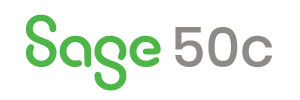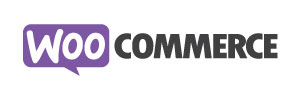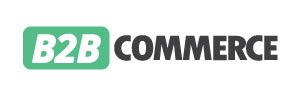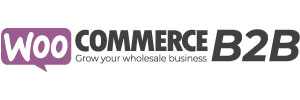In this article we’ll look at the benefits of integrating your Sage Accounting Software with an eCommerce system like WooCommerce in order to streamline your business. Should you integrate Sage to eCommerce or not? You decide:
- Should you integrate your Sage Accounting with an eCommerce store?
- In order to integrate my Sage Accounting with an eCommerce store, do I need technical skills?
- Different types of pricing and stock used from Sage for an eCommerce store.
- Order types raised in Sage: what’s best for my business?
- Sync speeds from Sage to eCommerce.
1. Why should you integrate your Sage Accounting with an eCommerce store?
An accounting system like Sage Accounting is the core of all your business data (financial transactions, stock and product management, pricing and profit margins etc.), so it would make sense for a couple reasons for Sage Accounting to integrate with eCommerce:
- Customers always see the correct stock on your website, which means they’ll never be disappointed when they buy something, only to be told the next day it’s out of stock. If the product stock syncs from Sage to your online WooCommerce store, you’ll never have to worry again.
- If someone buys something online, they’ve gone through the effort of choosing the item they fancy, entering all their personal details, completing a credit card transaction, only to receive an email the following day information them they need to pay more because the price was incorrect on the website, don’t expect them to return to your WooCommerce store in a hurry. Integrating product price from Sage Accounting to your eCommerce store means the price is always 100% accurate.
- In the ever increasingly digital world, where speed and turnaround times for orders are essential, having Sage Accounting eCommerce integration for your orders is paramount. As soon as the customers’ order is placed, the fulfillment process needs to kick into gear immediately. If you’re bogged down with manually capturing order information into Sage, you’re losing valuable time and making potentially critical errors with any manual entry.
2. In order to integrate my Sage Accounting with an eCommerce store, do I need technical skills?
There’s understandably a lot of apprehension when terms like “integrate”, “Integration” and “accounting eCommerce integration” get thrown around, for a business owner who may not have a dedicated IT team to assist in setting up their Sage Accounting to eCommerce integration, the question is: “What technical skills do I need”. The answer may surprise you:- For online/cloud based versions of Sage Accounting like Sage Business Cloud Accounting, the integration with Storehub.io is simple – all you need is your username & password and which pricelist you want to sync from Sage Business Cloud to your online store.
- For desktop/server-based accounting systems like Sage 200 Evolution, a little more setup knowledge is required, but only of your ERP system – Information like username, passwords, database path etc. will be easy enough for you to supply. When setting up your Storehub.io, you’ll received a document on where to find this information in Sage 200 Evolution.
The short answer is “No”, you do not need any special skills to integrate Sage Business Cloud Accounting with your eCommerce or WooCommerce store.
3. Different types of pricing and stock used from Sage for an eCommerce store.
When Sage Accounting is integrated with eCommerce, there’s a couple choices one can make pertaining to price & stock being synced from Sage through to your eCommerce/WooCommerce store:
- Price & Tax:
- You can sync “Tax inclusive” or “Tax exclusive” pricing from Sage Accounting when integrating with an eCommerce system. Typically for B2C (Retail eCommerce) stores, a tax-inclusive price will be send to your eCommerce store, like WooCommerce.
- When using Storehub.io you can set up multiple sales channels (read: many stores) and on each one of them, you can select a default pricelist, so you can sell in different regions/countries with different product prices (and currency types). The tax rates per product pricelist will automatically sync from Sage Accounting through to eCommerce platform.
- Stock
- When Sage Accounting syncs stock to your eCommerce store, there’s two main types of stock that one can use. “Stock on hand” means the stock that is physically available in your warehouse (ignoring orders that may have been placed).
- “Stock available” is the most common type of stock to be synced through from Sage Accounting and integrated with your eCommerce platform. This is due to it taking into consideration any pending orders (Sales Orders) that may have reserved stock, ensuring you never sell an item that’s out of stock on your website again, or that you can’t fulfill.
4 – Order types raised in Sage: what’s best for my business?
There are 3 main order types that one can receive from an eCommerce store back into your Sage Accounting software, and each have their own use-cases.
Quote: A Quote is useful if you’re unsure if the customer is going to proceed/confirm an order with a payment or not. If the customer has paid for an order, you can, in Sage Accounting, turn the order into an invoice easily.
If your business does not hold stock and relies on sourcing products from suppliers before being able to fulfill the order, a quote allows you to easily amend the order should the entire order request not be possible
Sales Order: If your eCommerce sells items that are stock-sensitive i.e you can not make more items, or source items on demand, you’ll want to reserve stock in Sage Accounting every time an order is placed. Every time a Sales Order is generated in Sage Accounting, you can set it so stock is reserved. Any order placed online, will reserve stock in Sage Accounting.
Invoice: For orders placed online on your WooCommerce store, if you’ve received payment via a payment gateway, you can set your Storehub.io account to raise an invoice automatically. This essentially confirms the transaction, and remove the item/s from stock so no other shopper may purchase the now newly out of stock items. Storehub.io will then update the stock on your website if its integrated with Sage Accounting in under 1 minute.
5 – Sync speeds from Sage Accounting to eCommerce.
Depending on your industry, having an eCommerce integration sync with Sage Accounting that performs efficiently (read: regularly) can be critical to your business.
If you have fast moving products and have a lead time for new stock that’s not conducive to good customer service, you’ll need the integration between Sage Accounting and your eCommerce store to be as fast as possible – this is so you never sell items that are not in stock and you’re unable to fulfill.
If you need your stock and price to sync quickly, Storehub.io syncs with Sage Accounting every 2 minutes for Sage 200 Evolution and Sage 50 Cloud, and for Sage Business Cloud, the stock, price and orders sync every 1 minute or less with Sage.
Even with an exceptionally large product inventory (we’re talking 30 000 product SKUs and above), the Storehub.io sync with Sage Accounting runs efficiently as we only scan for the latest product stock and price changes since the last sync time stamp.


